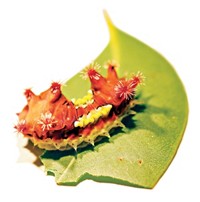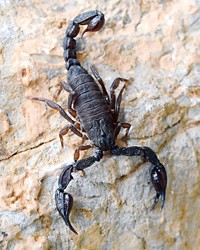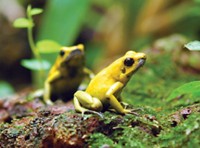Advertisement
Grab your lab coat. Let's get started
Welcome!
Welcome!
Create an account below to get 6 C&EN articles per month, receive newsletters and more - all free.
It seems this is your first time logging in online. Please enter the following information to continue.
As an ACS member you automatically get access to this site. All we need is few more details to create your reading experience.
Not you? Sign in with a different account.
Not you? Sign in with a different account.
ERROR 1
ERROR 1
ERROR 2
ERROR 2
ERROR 2
ERROR 2
ERROR 2
Password and Confirm password must match.
If you have an ACS member number, please enter it here so we can link this account to your membership. (optional)
ERROR 2
ACS values your privacy. By submitting your information, you are gaining access to C&EN and subscribing to our weekly newsletter. We use the information you provide to make your reading experience better, and we will never sell your data to third party members.
Biological Chemistry
Platypus Peptides
The strange mammal’s venom could help clarify details on evolution and possibly lead to novel medicines
by Stephen K. Ritter
December 21, 2009
| A version of this story appeared in
Volume 87, Issue 51
The duck-billed platypus has to be the strangest mammal around. Native to eastern Australia, the egg-laying creature has a signature rubbery snout, tail like a beaver’s, and feet like an otter’s, and it sports an ankle spur on its hind foot that males use to deliver a shot of venom to unsuspecting victims. An international team led by Masaki Kita of Japan’s University of Tsukuba and Daisuke Uemura of Keio University, also in Japan, are now reporting new chemical details on the cocktail of peptides that give the venom its punch (J. Am. Chem. Soc. 2009, 131, 18038). Platypus venom is powerful enough to kill small animals, but luckily it causes only excruciating pain in humans that evolves into long-term pain sensitivity. The researchers previously reported that crude platypus venom potently increases Ca2+ concentration and disrupts the membrane in human neuroblastoma cancer cells. Guided by that finding, they used gel-permeation chromatography and mass spectrometry to purify and characterize 11 novel peptides of varying lengths in the venom. Although more studies are needed, it appears that the principal compound, a heptapeptide, takes over control of calcium ion channels. A better understanding of the peptides’ neurotoxicity could clarify the evolutionary and ecological roles of the venom and possibly lead to novel medicines, the team notes.





Join the conversation
Contact the reporter
Submit a Letter to the Editor for publication
Engage with us on Twitter